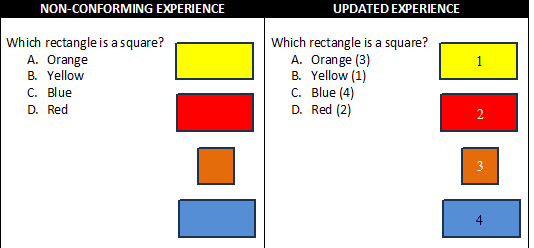State and local governments: Do your websites and mobile apps meet accessibility standards?
The compliance dates for DOJ’s digital accessibility requirements are coming soon!
Title II of the Americans with Disabilities Act (ADA) protects individuals with disabilities from discrimination based on disability in services, programs, and activities provided by state and local governments. Though the Department of Justice (DOJ) has long held that such protection extends to the digital sphere, only last year did it issue a rule establishing technical standards for achieving accessible web content and mobile apps on government websites and apps. Public entities now have a clear set of technical standards to meet their ADA obligations on the web and in mobile apps, including when another entity provides digital content or services on their behalf. Compliance deadlines are approaching.
Affected entities should prioritize their compliance efforts. Implementing the technical requirements can absorb significant time and resources and may require coordination. The web content and mobile apps of contractors and other entities providing public services, programs, and activities will need to meet the accessibility requirements as well. Below is more information on the DOJ’s requirements and tips for getting started for those beginning their journey.
Who must meet the new DOJ digital accessibility rules?
Title II of the ADA and web content and mobile app accessibility requirements apply to state and local governments, including any agencies or departments, special-purpose districts such as ports, and commuter authorities. Examples include:
-
- State and local government offices that provide benefits and social services, for example, food aid, health insurance, or employment services.
- Public schools, community colleges, and public universities.
- State and local police departments, courts, and election offices.
- Public hospitals and public healthcare clinics.
- Public parks and recreation programs.
- Public libraries, and
- Public transit agencies.
What are the compliance dates for the DOJ’s digital accessibility requirements?
The compliance dates vary but begin in less than a year: on April 24, 2026. This table shows how much time a state or local government is allowed to comply with this rule:
| State and local government size | Compliance date |
| 50,000 or more persons | April 24, 2026 |
| 0 to 49,999 persons | April 26, 2027 |
| Special-district governments | April 26, 2027 |
What are the web content and mobile app accessibility technical requirements?
The Web Content Accessibility Guidelines (WCAG) Version 2.1, Level AA is the technical standard for state and local governments’ web content and mobile apps. Just as the existing ADA Standards for Accessible Design describe the technical standards for a building to be physically accessible under the ADA (such as how wide a door must be), WCAG outlines the technical standards that apply to web content and mobile apps, such as text spacing, video captioning, and the use of flash.
For example, under the new requirements, color cannot be the only visual means to convey information, indicate an action, prompt a response, or distinguish a visual element. See how a web experience can be changed to meet WCAG color requirements below:

Where should an organization start if the requirements haven’t been on the radar?
| Review the requirements |
Small entity? Check out the Compliance Guide made just for you. |
| Know your compliance deadline | The deadline primarily depends on the population of your state and local government, which is calculated using data from the US Census Bureau. For more help, you can contact the ADA Information Line: |
| Build your compliance team |
Compliance teams may include counsel, IT staff, web team, and developers, and require engagement with including contractors, service providers, and vendors. |
| Identify the web content and apps that must comply | Conduct an inventory of your government’s web content and mobile apps and look for exceptions to the DOJ’s rule. Consider web content or mobile apps other entities provide or post for your government. |
| Assess the compliance gaps | Utilize resources on the W3C Web Accessibility Initiative (WAI) website and consider widely available assessment tools. |
| Develop and implement a compliance plan | Develop a compliance plan based on the assessment. Consider prioritization factors. |
| Maintain your efforts | After the applicable compliance deadline, your state or local government must continue to follow the technical requirements. Implement sustainable processes and policy improvements, as well as training, to support ongoing compliance. Monitor technical requirements as they evolve, particularly with the adoption of emerging technologies. |
This article summarizes aspects of the law and opinions that are solely those of the authors. This article does not constitute legal advice. For legal advice regarding your situation, you should contact an attorney.
Sign up
